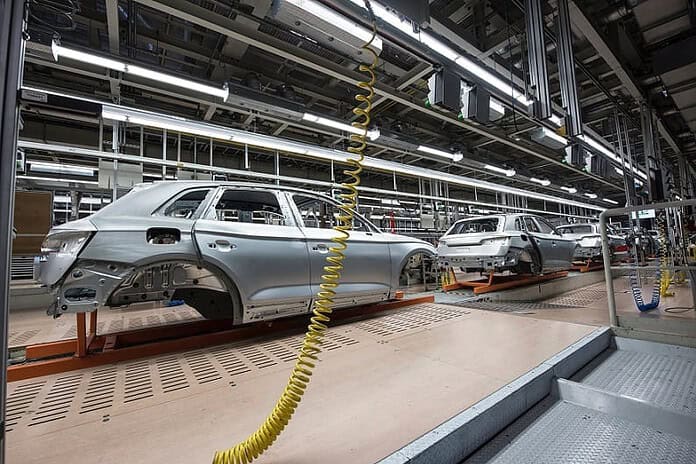What is the objective of every asset-based manufacturing company?
All factors remaining constant, all manufacturers who want to stay in business are always looking for better ways to reduce production costs and increase production efficiency in order to enjoy larger profit margins… of course at the safety of workers.
But for this dream to become a reality, company machinery, and equipment, among other key components like manpower, need to function flawlessly and at their optimum.
However, this is not always the case.
One of the main challenges manufacturers face is unplanned downtime caused by machinery. It is even estimated that this kind of downtime costs manufacturers $USD 50 billion annually.
In this article, we are going to look at the 3 uses and applications of AI in manufacturing that have been used to curb a number of challenges that manufacturing companies face, including unplanned downtime, which 42 percent of the time is the result of asset failure.
If you didn’t know it yet, AI applications have taken the manufacturing sector hostage and are now transforming every aspect of it… including replacing humans with robots.
But this wave is not only sweeping the manufacturer, check out this other article where I outlined the other top trending industries where AI is heavily in use today.
Let’s now look into the top uses and applications of AI in manufacturing in greater detail.
1. Predictive Maintenance
Regular maintenance of production machinery and equipment is actually one of the most costly expenditures for a manufacturing company.
While a company might be tempted to skimp on this expense, or at least understate its importance, the ability to maintain this equipment in a continuous and flawless operational state directly affects the bottom line of any asset-reliant production company.
That being said, any unplanned downtime could mean huge losses and other associated costs to the company.
It is even estimated that asset failure is the cause of 42% of unplanned downtime and that unplanned downtime caused by machinery failure costs manufacturers $USD 50 billion every year.
How about the ability to predict such downtimes and take the necessary measures before they actually occur?
With the advancements in artificial intelligence, it is now possible to build predictive models that can foresee and predict future asset performance and possible malfunction.
Using AI technologies like machine learning and neural networks, engineers are able to design these smart systems that take out the reactive nature of machine maintenance and replace it with a more pragmatic approach.
Predictive maintenance is now one of the most common uses and applications of AI in manufacturing since it can save a lot of time and resources.
In fact, a predictive maintenance system will soon be a requirement for any manufacturing company that needs to know when the next failure of a machine would occur.
By implementing this alone, a manufacturer can drastically cut down the relatively high costs associated with unplanned downtime while also extending the Remaining Useful Life (RUL) of production machinery and equipment.
2. Defect Detection
Defect detection, for the most part, has always been a manual process.
Most manufacturing assembly lines do not have automated systems or technologies put into place to identify defects in finished products.
In the event that a company has such a system in place, its functionality is more often than not pretty basic. A software engineer often needs to code the algorithm that is tasked with differentiating between the functional and defective components.
While this might sound like an improvement, there is a big bottleneck to this kind of approach.
These hand-coded systems can neither learn from past experiences nor integrate new pieces of information into the process to refine the effectiveness of the system.
And what’s the impact of this?
It means often these systems come up with a lot of false positives, that is to say, defects that are not actual defects. So a human worker is required to manually check and verify every false positive before making a conclusion.
Now, by incorporating artificial intelligence into the process, we can now have a smarter defect detection system that frees the human from the repetitive work of manual verification.
Machine learning and artificial intelligence are used to build these defect detection systems and power them with self-learning capabilities. This is already being seen in industries like self-driving car production.
So manufacturers can then save tons of hours required for quality control by simply reducing false positives.
3. Human-Robot Collaboration
The use of artificial intelligence in the manufacturing sector will replace humans and render them jobless…
Such jittery statements have led to pessimistic feelings among many about whether AI will do more harm than good to the general public. It has led to serious discussions around AI and Ethics. And while the first part is true, that AI will replace some manual jobs, the second part is not entirely correct.
Why?
Well, because while more jobs are being taken over by robots, workers are being trained for more advanced positions like in product design and equipment maintenance.
In most manufacturing settings, collaborative robots working alongside human workers are now being deployed as an extra set of hands. That’s why there has been an increased demand for data scientists skilled in AI applications.
Now let’s differentiate between collaborative robots and the common autonomous robots.
Autonomous robots that are programmed to perform one specific task, have existed for centuries but collaborative robots are now taking this a step further by being able to perform multiple tasks.
Cobots, which is an abbreviation for collaborative robots, can learn various tasks like detecting and avoiding obstacles. With this cognitive ability and spatial awareness, these robots can work collaboratively alongside humans.
For example, a Cobot can be put to work in an automotive factory assembly line where it lifts heavy car parts and then holds them in place as the human workers secure them.
Conclusion
Just like in the eCommerce sector, the manufacturing sector is not exempted from challenges that they often have to surmount to stay in business.
Every typical manufacturer is frequently presented with different challenges such as unexpected machinery or asset failure as well as defective product delivery…
Both of which threaten the survival of any small or big brand. News of a faulty brand can spread pretty quickly today, thanks to social media, and consumers can quickly gang up and move to a competitor in no time really.
However, by leveraging AI and machine learning technologies, manufacturers can now achieve greatness by:
- improving operational efficiency,
- launching new products,
- customizing product designs and
- planning future financial actions.
In this article, we have looked at how AI is transforming manufacturing through powerful data science tools and technologies like Machine Learning, Deep Learning, and Computer Vision.
What are some of the popular applications and uses of artificial intelligence in manufacturing that I didn’t mention in this list?
Please share your thoughts in the comments below.







